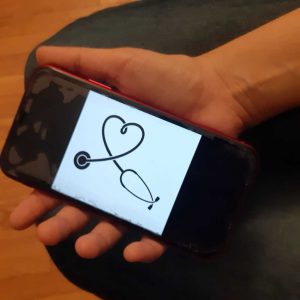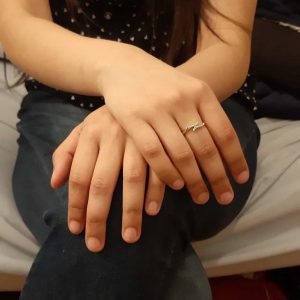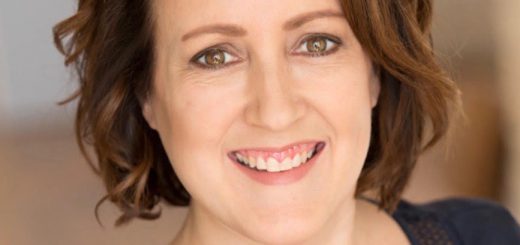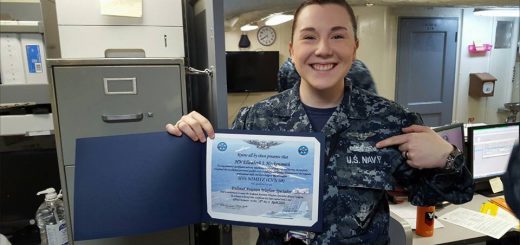Overqualified for U.S. post-grad work
For international student professionals seeking training or work, COVID-19 intensifies barriers.

By Becca Most
Despite being a certified doctor in India and already completing medical school, Ritu has found it impossible to continue her career in the U.S.
Although the 28-year-old has lived in Minnesota for over a year, she still hasn’t been able to “match” in a pediatric residency program, which would allow her to step into a postgraduate training program at a U.S. hospital.
Because the residency process has been so long and difficult for her, Ritu would only give her nickname for this article, saying she didn’t want to risk publicity that could hurt her chances to match next year.
Ritu’s situation is hardly isolated. International students like her, who have come to the University of Minnesota with a degree and work experience in another country, face several barriers that weigh on them daily. Many have trouble finding jobs or even landing interviews in the first place, which has pressured them to go back to school.
And for many international students who apply for post-graduate work, it can be difficult to show employers that they’re qualified. The employer may not recognize a foreign college or university on a resume and may assume their work doesn’t meet industry standards.
Sometimes, students in Ritu’s situation must spend extra time completing various training programs or degrees in order to pursue the career paths they’ve already trained for in their home countries.
Redoing rotations at a cost
At age 19, Ritu began four years of medical school at Government Medical College in Punjab, India, where she did clinical rotations and a year of pediatric training at a nearby hospital. Clinical rotations give medical students hands-on experience in hospitals by letting students shadow physicians and interact with patients.
In 2016, knowing that she would have a better chance of getting a residency in the states if she did clinical rotations in a U.S. program, Ritu left India before graduating and came to the U.S. to redo her rotations and take her medical exams. She then returned to India to graduate in 2018.
Repeating those rotations gave her more experience as well as a letter of recommendation from a U.S. physician that she could use in the competitive match program to find a postgraduate residency in pediatrics. But it came at a significant cost, she said.
“I don’t know why our school is not considered on par with [the U.S.] medical education system,” Ritu said. “Some hospitals [here] charge $2,000 for one month or one rotation, and I did eight months. They don’t consider the work we did back in our country.”
Ritu also enrolled in a graduate epidemiology program at the University in September 2019 after struggling to get interviews for residencies when she first moved here. She said her hope is that a master’s in public health would give her research experience and make her more marketable.
But even after doing that, this year she did not match with any residencies for the second time despite applying to over 150 programs. The program received over 40,000 applications in 2020 to fill around 37,000 available spots, a record high for the program, according to the National Resident Matching Program. Pediatrics filled 95.4% of the offered positions, and matched 17,135 primary care applicants.
Lost in translation
Emily Borman-Shoap, the director of pediatric residency at the University of Minnesota’s Medical School, said international education can present obstacles for the match application. She sorts through thousands of clinical rotation applicants, and most of the time her initial assessment relies on submitted documentation, which includes a CV and transcript with the applicant’s test scores.
An applicant’s international experience often raises many questions for reviewers, especially about the setting and size of the hospital they worked in, as well the kind of patients they oversaw and the technology they are familiar with, she said. Sometimes it can be difficult to compare transcripts or grade averages relative to the rest of their graduating class.
“I think that’s a challenge that international medical graduates face,” she said. “It may be hard for their written packets to demonstrate what they have done and how prepared they may be.”
Although research experience can sometimes strengthen an application, it doesn’t necessarily show the student’s experience with patient care, or other factors directors consider, Borman-Shoap said.
“Many international medical graduates get kind of put in a tough position where they really need to prove that they can take care of patients,” she said. “But there isn’t a good avenue for them to do that.”
Barriers vary

Finding work for trained international students can be easier in other fields. Rahul Bhojwani, a 26-year-old graduate student at the University, is one of the luckier international students who was able to land a job after coming to the U.S. in 2017 with a computer science degree from India. One thing that sometimes makes it difficult for international students to get hired is the visa process, he said.
“The majority of the students that I know are having a very hard time [getting] full time employment,” Bhojwani said. “And that’s also given that they’re super talented, super valuable for companies. But that entire dynamic of hiring an international student comes in play, which hinders the role of intellect.”
Many companies in the U.S. don’t want to hire students on visas because it is a financial liability, said Bhojwani. In order for international students with an F1 visa to stay in the country, they have up to 90 days post-graduation to find employment in the field they studied. A F1 visa is designed for international students who want to study in a different country with the eventual plan of returning home.
After a year, if the employer wants to keep the international student on, they have to sponsor their visa and pay for a legal adviser. Most students don’t make it this far and have to go back to their country if their visa is not approved.
The U.S.’ suspension of visa services nationwide on March 18 doesn’t help ease that anxiety.
Bhojwani said the University is not doing a good enough job helping students gain exposure to companies related to their field. A lot of it comes down to networking, which is something that can be hard for students who don’t have the time, resources or connections that others do, he said.
A strain made worse
For many like Ritu, getting a job quickly will help pay off student loans without accumulating too much debt. The pressure to support herself financially, do well in classes, complete research and finish clinical rotation has had a big impact on her mental health.
Although she worked three jobs during the school year to stay on top of expenses, after the University shifted online March 12, she now can only work remotely six hours a week at the one job that kept her on.
“I’m pretty tense about it,” she said. “I don’t know how I’m going to pay [my loans] back if I’m not getting paid.”
Ritu said she never got anxious before she came to the U.S. but now gets anxiety attacks often, especially when she would spend sometimes up to 18 hours a day working, studying and researching before COVID-19.
Now that her remaining rotations and research have been canceled in response to the pandemic, Ritu said she will have to stay in the U.S. until she applies for residencies next semester. Even then, due to these cancelations, she said she might not even have the experience she needs to land one.
“Until the coronavirus situation improves I can’t do anything really,” she said. “It’s very frustrating. It’s not in your hands.”


